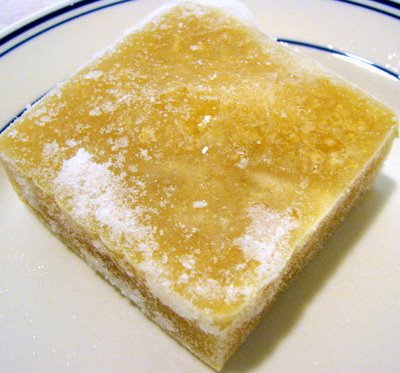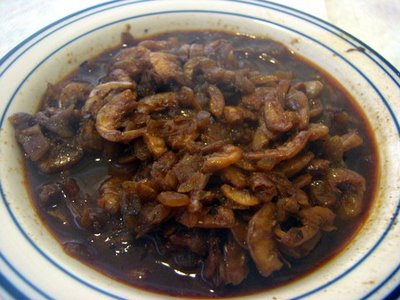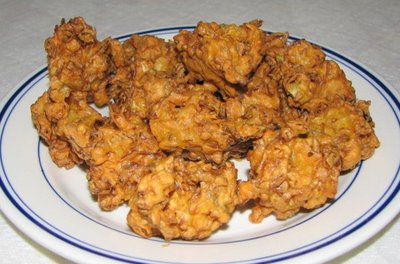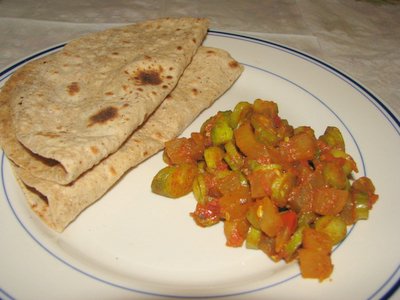
Bitter Gourd or Karela or Karate in konkani is a vegetable very bitter in taste as the name specifies. The Bitter Gourd available in India is a little more crisp and strong in flavour than the bitter melon available in the local American produce.
Some people do not like bitter gourd because of its taste. But try this recipe, you are sure to like it. Karate poDi is a traditional konkani dish prepared during any special occasions or on festivals.
2-3 bitter gourds
1 cup rice flour
1 tsp chilli powder
1 chickpea or chana size hing
salt to taste
oil to fry
Wash and rinse whole bitter gourd. Slice into rounds of 0.5 Cm's thick. You can make it very thin if you want to avoid the bitter taste totally. Sprinkle a little salt over the bitter gourd slices and set aside.
Dissolve hing in a tsp of water. Mix chilli powder, rice flour, hing and salt. Be careful with salt because you have already sprinkled a few on the bitter gourd. Add a little water and make a thick paste. Add the bitter gourd slices and mix well so that the paste is coated on the slices. Adjust water if the paste becomes too dry. Add rice flour if the paste is too thin.
Heat oil in a kadai/wok to about 300-350F temperature. Put one slice of bitter gourd and check if the oil sizzles and the slice floats in the oil. If not wait for sometime and check again. Add the slices one by one to the oil. Do not crowd the wok, the slices will stick to each other and you do not get rings separate. Turn the slices upside down and fry till both the sides get dark red colour.
If you do not prefer a little bitterness in the taste, then remove the poDi/rings from the oil before they tum brown. If you like the rings crispy throughout then fry till they are dark brown on both the sides. Drian all the oil on a paper towel.
Serve with rice and dal or as an appetizer.
You can poDis out of kantola or paagiLa in konkani, raw bananas, suran, drumsticks in the same way.

















 Make a vertical slit around the pit of the avocado.
Make a vertical slit around the pit of the avocado.  Twist the two hemispheres and open it.
Twist the two hemispheres and open it.  Hit the knife into the seed and pop it out. Discard the pit.
Hit the knife into the seed and pop it out. Discard the pit.  With a small knife make vertical and horizontal slits on the pulp. Scoop up the pulp with a spoon.
With a small knife make vertical and horizontal slits on the pulp. Scoop up the pulp with a spoon. 










